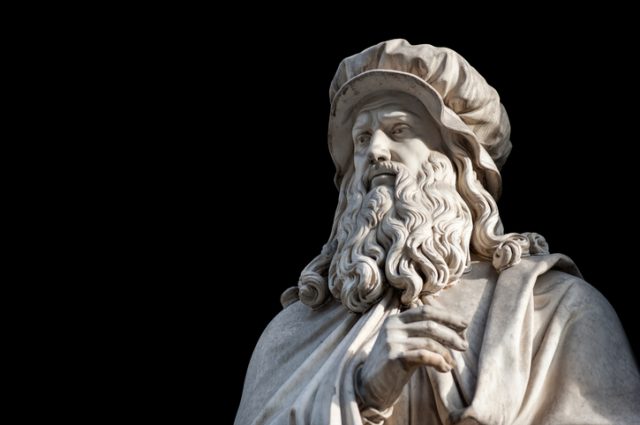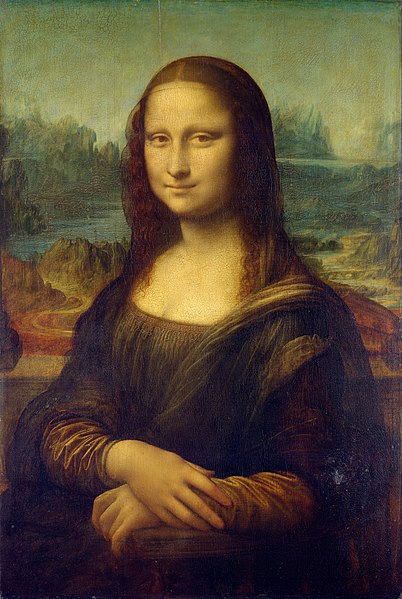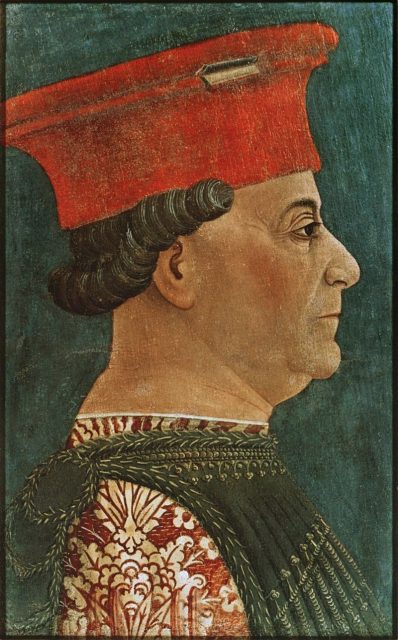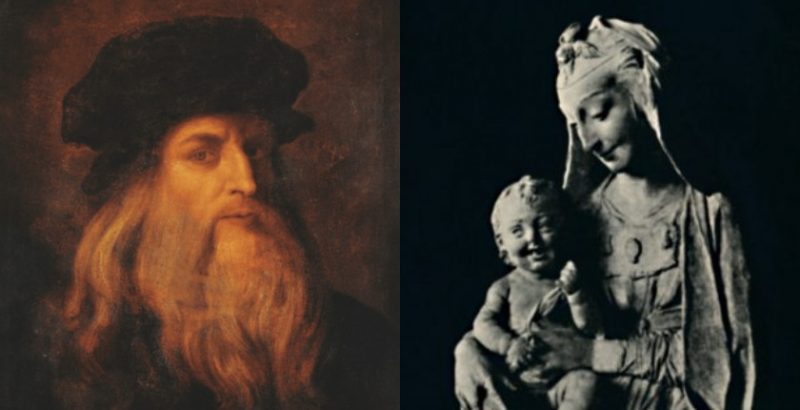Leonardo da Vinci, one of the greatest artists who ever lived, was rumored to have created sculptures, but there wasn’t even one three-dimensional finished sculpture identified as his. That has changed. Scholars believe that a sculpture formerly attributed to Antonio Rossellino was done so mistakenly, and it is actually the work of Leonardo.
“The Virgin with the Laughing Child” has been housed at London’s Victoria and Albert Museum since 1858, credited to Rossellino. But now scholars believe da Vinci created it around 1472, when he was 19 or 20.
The sculpture “had long been credited to another artist, Antonio Rossellino,” reported The Guardian. “That is because scholars had been bamboozled by the posthumous authority of the late art historian and British Museum director John Pope-Hennessy, according to Francesco Caglioti, the Italian academic who is leading the new attribution.”

Scholars say “the voluminous, complicated draperies” flowing over the Madonna’s legs provide clues: they are similar to drawings that Leonardo made at the time “which were almost obsessive studies of abstract folds and shadowy recesses,” The Guardian reports.
Victorians were the ones who commented on the Leonardo-esque look of the V&A attribution, said Caglioti in an interview. The Virgin Mary looks down at the Christ child on her lap with an enigmatic smile, the sort he made famous in the Mona Lisa.

The realistic liveliness of the child’s face also resembles Leonardo’s drawings of young children. “Yet portraying a laughing Christ in the 15th century was not only radical, but practically blasphemous,” reports the newspaper. “In a passage in Leonardo’s notebooks, he remembers getting into trouble when younger for portraying the infant Christ. Could this be the work that got him in hot water?”
Related Video: Exhibition Of Leonardo Da Vinci Designs At Science Museum
https://youtu.be/dtCairKbsL8
Francesco Caglioti, who teaches at Naples University, said art historian John Pope-Hennessy, who credited the sculpture to Rossellino, often attributed work to arts “at his whim” without supporting evidence. Pope-Hennessy died in 1994. Other exciting corrections are being made regarding Leonardo da Vinci.
![The Virgin with the Laughing Child’, 1928. From The Mind of Leonardo Da Vinci, by Edward McCurdy. [Jonathan Cape, London, 1928] (Photo by Print Collector/Getty Images)](https://www.thevintagenews.com/wp-content/uploads/sites/65/2019/03/gettyimages-679510020-434x640.jpg)
Leonardo was eager to create beautiful sculptures, but his ideas were too ambitious. The two great sculptural projects to which Leonardo devoted himself were not realized: a huge, bronze equestrian statue for Francesco Sforza, which he worked on from about 1489 to 1494, nor a monument for Marshal Trivulzio, on which he was busy in the years 1506 to 1511.

Da Vinci wanted to cast the horse in a single piece, but the gigantic dimensions of the steed presented insurmountable technical problems. Many sketches exist of his endeavors, but no three-dimensional work has been laid at the feet of Leonardo until now.
While Caglioti is positive that the Virgin With the Laughing Child was made by Leonardo da Vinci, the V&A is officially more cautious, saying: “A potential attribution to Leonardo da Vinci was first proposed in 1899, so Professor Caglioti’s study opens up the discussion of its authorship afresh.”
As The Guardian wrote: “If this sensational new attribution wins acceptance, it will ironically mean that just as Britain leaves the EU, its public art collections are once again proved to be among the finest depositories of Europe’s cultural heritage.”
Nancy Bilyeau, a former staff editor at Entertainment Weekly, Rolling Stone, and InStyle, has written a trilogy of historical thrillers for Touchstone Books. Her new book, The Blue, is a spy story set in the 18th-century porcelain world. For more information, go to www.nancybilyeau.com
